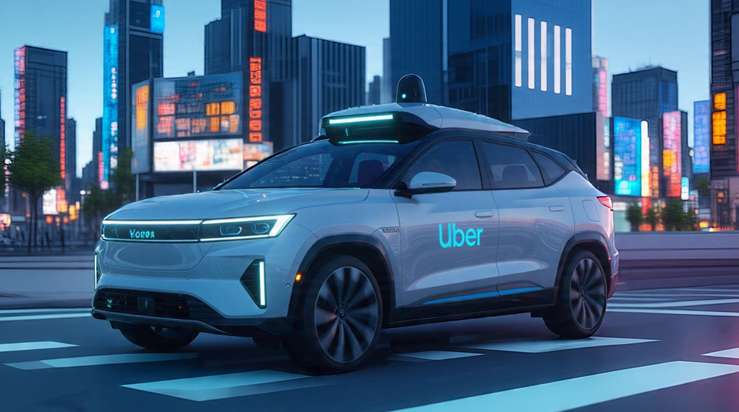Uber’s hitting the gas on self-driving cars again! In a blockbuster move, the ride-hailing giant announced a $300 million investment in electric vehicle maker Lucid Motors to roll out a fleet of robotaxis starting in 2026. Teaming up with autonomous tech startup Nuro, Uber plans to deploy over 20,000 Lucid Gravity crossovers in one major U.S. city to kick things off. This deal is a bold leap into the future of transportation, but with sky-high costs and regulatory hurdles, is Uber betting big on a dream or a dud? Let’s dive into what this means for you, the EV industry, and the streets of tomorrow.

Remember when self-driving cars were the talk of the town? A few years back, the hype was real, but the results? Not so much. After a rocky exit from the autonomous vehicle (AV) game in 2020, Uber’s back with a vengeance. This time, they’re not going it alone. Partnering with Lucid, a luxury EV maker, and Nuro, a startup born from ex-Waymo engineers, Uber’s banking on a trifecta of innovation. Starting in 2026, they’ll unleash a fleet of Lucid Gravity SUVs—sleek, electric crossovers loaded with Nuro’s self-driving tech. The plan? Launch in one major U.S. city (think Los Angeles or Austin) and scale from there.
This isn’t Uber’s first robotaxi rodeo. They’ve inked deals with Volkswagen for ID.Buzz vans and partnered with Waymo and Aurora. But the Lucid-Nuro deal, announced July 17, is their biggest swing yet, with $300 million funneled into Lucid alone, per an SEC filing. A prototype’s already zipping around Nuro’s Las Vegas test track, proving the tech’s no pipe dream. Still, the road to robotaxi riches is littered with potholes.
So, why should you care? First, this deal could reshape how you get around. Imagine hopping into a driverless Lucid Gravity, no small talk required, as it whisks you across town. Uber’s betting these robotaxis will cut costs (no driver to pay!) and make rides cheaper—eventually. But don’t hold your breath for a budget-friendly ride just yet. Building and scaling AV tech is crazy expensive, and regulations are tighter than a rush-hour traffic jam. Nuro still needs state licenses to operate, though they’ve got some from their delivery bot days.
For the EV world, this is huge. Lucid, known for its high-end Air sedan, is stepping out of its comfort zone. “We’re expanding beyond our traditional EV tech,” said interim CEO Marc Winterhoff. They’re not just making cars for the elite anymore—they’re eyeing the robotaxi market and even personal vehicles with Nuro’s tech. This could give Lucid a leg up in a cutthroat industry where Tesla, Rivian, and others are duking it out.
The Robotaxi Race Heats Up
Uber’s not alone in this driverless dash. Alphabet’s Waymo, with 1,500 vehicles and 100 million autonomous miles under its belt, is cautiously expanding in cities like San Francisco and Phoenix. Amazon’s Zoox is testing steering-wheel-free robotaxis in Las Vegas, aiming for a commercial launch this year. And let’s not forget Tesla, which kicked off a small Model Y robotaxi trial in Austin last month. Elon Musk’s promising a rapid rollout, but his track record on deadlines is… optimistic.
The problem? Robotaxis are a tough nut to crack. General Motors’ Cruise shut down after costly setbacks and federal probes. High development costs, tech glitches, and safety concerns have humbled even the biggest players. Uber’s deal with Lucid and Nuro is a fresh shot at cracking the code, but it’s a gamble. Nuro’s tech, originally built for delivery bots, is now scaling to passenger vehicles, and Lucid’s betting its financial future on this pivot (they even proposed a one-for-ten reverse stock split to shore up their stock price).
By late 2026, you might see Lucid Gravity robotaxis cruising a U.S. city near you. If Uber, Lucid, and Nuro pull this off, it could make driverless rides as common as your morning coffee run. But if costs spiral or regulators slam the brakes, it’s back to the drawing board. For now, Uber’s $300 million bet is a signal: the robotaxi revolution is coming, and they’re all-in. Keep your eyes on the road—this ride’s just getting started.
Related Post
